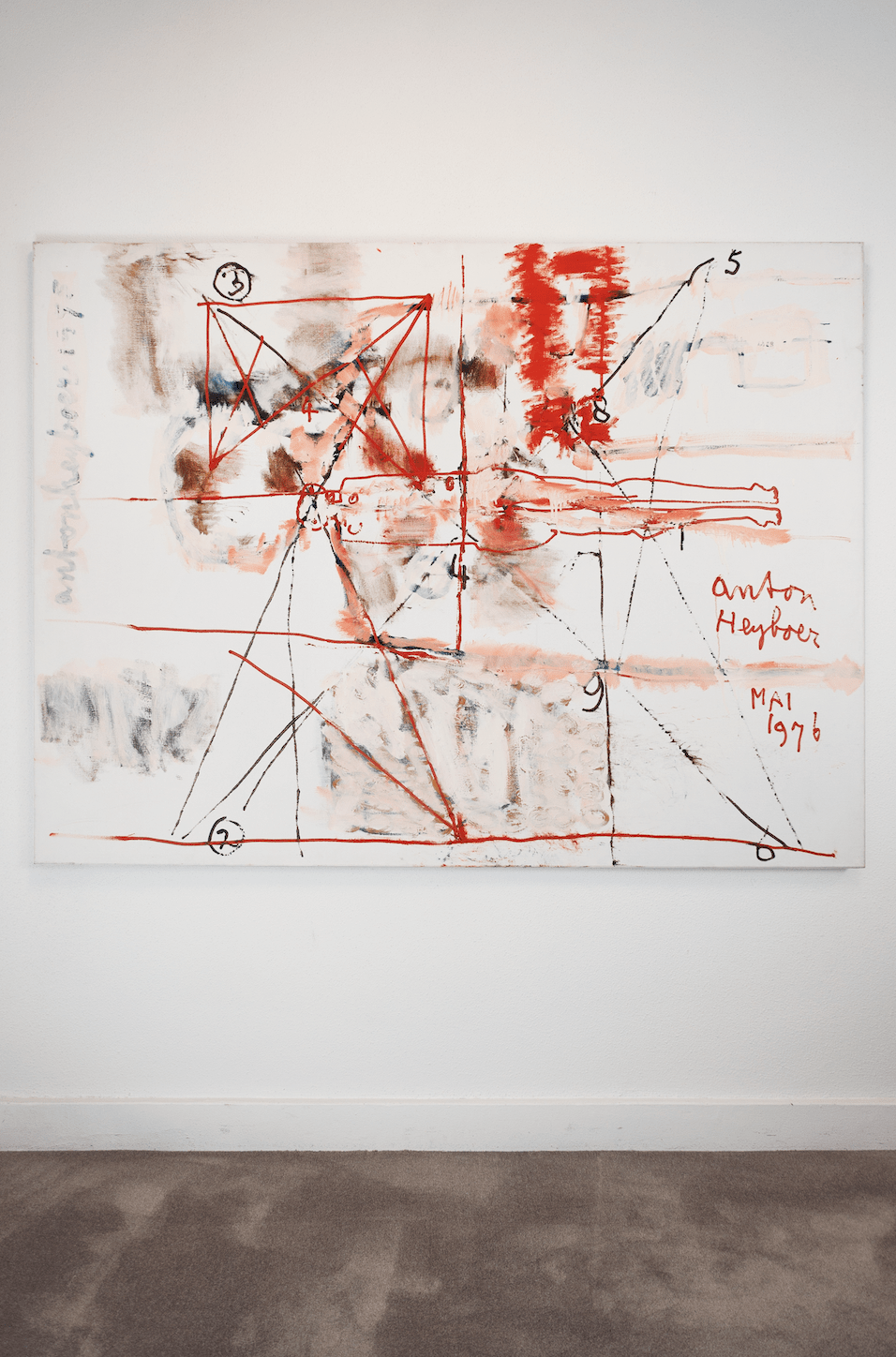

Anton Heyboer (b. 1924-2005)
Untitled

Anton Heyboer became known to mainstream audiences as an eccentric who shared a farm in Den Ilp, The Netherlands, with his five brides and who made very mediocre drawings of chickens for daytrippers in exchange for a fee, a day out to meet the artist and see his studio. Add to that a longstanding and highly publicised issue about hundreds of forged Heyboer etchings and there goes your reputation as a celebrated artist. People start seeing you as a clown, a charlatan, even if unjustly so…
Anton Heyboer’s work is difficult to understand without knowing anything about “Heyboer’s system”. Heyboer used to live in the Haarlem area during the 1950s as he lost touch with reality, most likely as a result of Post-Traumatic Stress due to compulsory hard labour in Germany during World War II. His delusions resulted in his admittance to a psychiatric institution in Santpoort, which is where Heyboer developed his System. This System – with mystical symbols and ratings – helped him make sense of the world and guide his art. Many art historians have been driven to despair trying to fathom the System, but Heyboer benefited from it for years. Its poetry and mysticism are more important than deciphering its logic.
1975 was important and very productive for Heyboer, as it was the year when he was invited to the prestigious Documenta in Kassel. During that same year, Stedelijk Museum director Edy de Wilde asked Heyboer to put together a major exhibition with “action paintings”, paintings that are made on the spot, in front of the audience.
The Stedelijk Museum show turned out to be a great success, receiving rave reviews. Heyboer himself, however, was suspicious of so much approval and appreciation. In reaction to the compliments after the show, Heyboer destroyed or painted over the majority of the paintings. Heyboer edited a number of works from the exhibition in the calm atmosphere of his studio, and he eventually released them for exhibitions or for sale. This painting, depicting a human at rest amidst the System, is one of them. Despite it having been brushed over, we just about see the year “1975” at the top left, and on the right, we can see it was re-dated in 1976. The canvas barely survived the show at the Stedelijk Museum, but a year later, Heyboer revised, repainted and re-dated it.